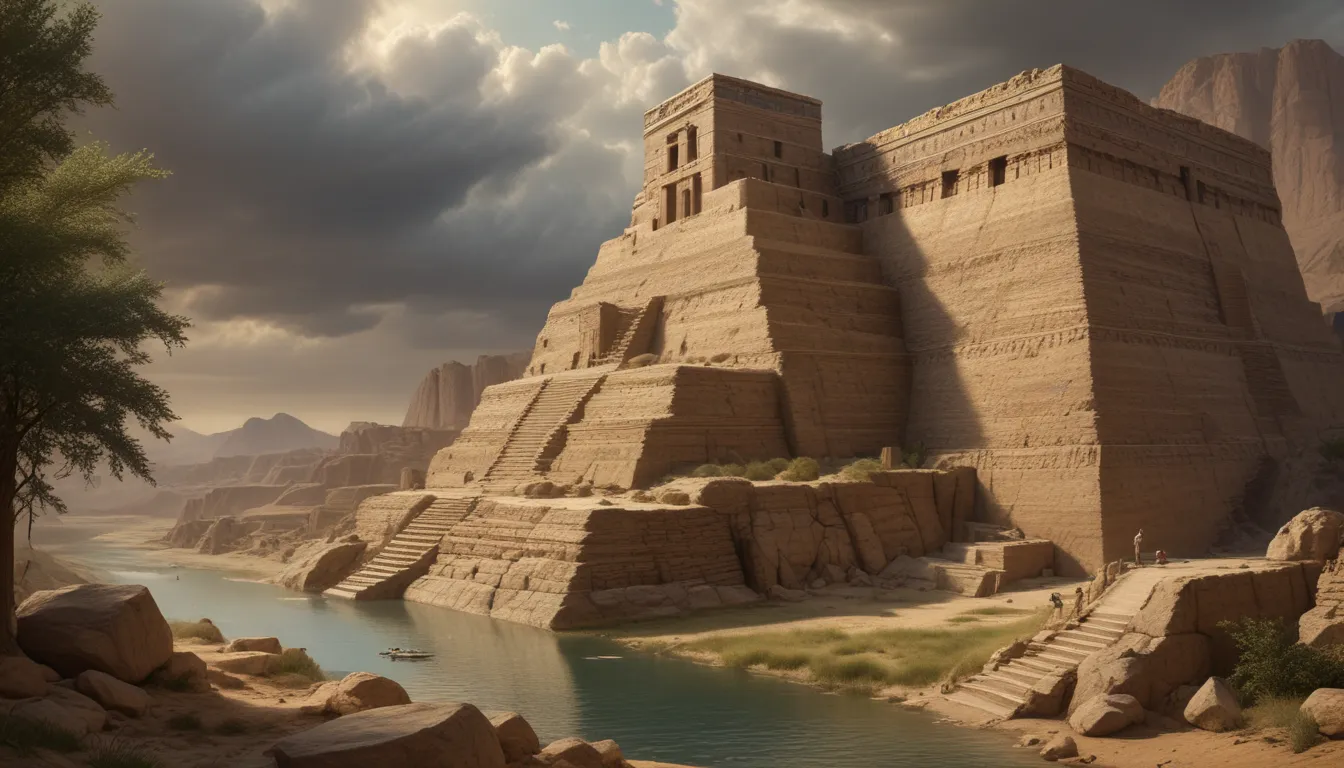The images in our articles may not match the content exactly. They are used to grab your attention, not to show the exact details in the text. The images complement the text but do not replace it.
Step back in time and immerse yourself in the captivating world of ziggurats, the majestic stepped pyramids that have long fascinated humanity with their architectural grandeur and religious significance. Join us on an enlightening journey as we uncover 18 intriguing facts about these ancient structures, delving into their historical context, ingenious construction techniques, and societal roles in ancient Mesopotamia. Let’s unravel the mysteries and marvels of ziggurats together, gaining a profound understanding of the civilizations that crafted these awe-inspiring monuments.
Key Takeaways:
- Ziggurats were dedicated to city deities, symbolizing prosperity and divine protection.
- The ziggurat at Ur, dedicated to the moon god Nanna, is over 4,000 years old.
- Ziggurats were often part of larger temple complexes, serving as the focal point of religious life.
- Constructed from sun-dried bricks, ziggurats showcased advanced engineering techniques.
- The ziggurat at Ur underwent multiple phases of construction, reflecting its enduring cultural significance.
Unveiling the Secrets of Ziggurats
Situated in the heart of ancient Mesopotamia, ziggurats were not mere architectural marvels but sacred structures that embodied the spiritual and cultural essence of the civilizations that erected them. The ziggurat at Ur, dedicated to the moon god Nanna, remains a timeless testament to the ingenuity and religious fervor of the Mesopotamian people. Let’s embark on a journey to explore the enigmatic world of ziggurats, uncovering their significance, construction, and enduring legacy.
The Oldest Ziggurat: A Glimpse into Ancient History
The ancient ziggurat of Ur, believed to be constructed around 2100 BCE in modern-day Iraq, stands as the oldest surviving ziggurat in the world. This remarkable structure, over 4,000 years old, reflects the architectural prowess of the Mesopotamian civilization and serves as a glimpse into the distant past when ziggurats were revered as sacred sites of worship and divine connection.
Architectural Marvels: The Design and Construction of Ziggurats
Deriving its name from the Akkadian word “ziqaru,” meaning a high building or raised area, ziggurats were characterized by their tiered, terraced design that gradually ascended towards the sky. Constructed from sun-dried bricks and reinforced with layers of bitumen for stability, these monumental structures showcased the advanced engineering skills of ancient Mesopotamian architects. Each tier of the ziggurat formed a distinct platform, creating a striking visual impression that emphasized the structure’s towering presence on the landscape.
Religious Significance: The Role of Ziggurats in Ancient Mesopotamia
Ziggurats were not just architectural wonders but sacred sites dedicated to the patron deity of the city, symbolizing prosperity, divine protection, and the connection between heaven and earth. The ziggurat at Ur, dedicated to the moon god Nanna, played a central role in religious rituals and ceremonies, serving as a conduit for communication with the divine. These towering structures were integral to the cosmological beliefs of ancient Mesopotamian societies, embodying the harmonious alignment between the earthly realm and the celestial spheres.
Excavating the Past: The Discovery of the Ziggurat at Ur
In the 1920s, British archaeologist Leonard Woolley conducted groundbreaking excavations at the ziggurat of Ur, unearthing its architectural splendor and religious significance. The discoveries made during this excavation shed light on the enduring cultural and spiritual importance attributed to the ziggurat, providing invaluable insights into the ancient civilization that thrived in the region. Woolley’s work brought to life the grandeur and legacy of these ancient structures, captivating the imagination of people worldwide.
Central to Civic Life: Ziggurats in Ancient Mesopotamian Cities
Beyond their religious function, ziggurats played a pivotal role in the civic and social fabric of ancient Mesopotamian cities, serving as beacons of faith, unity, and communal identity. Integrated into larger temple complexes that included courtyards, shrines, and administrative buildings, ziggurats formed the spiritual heart of the city, inspiring a deep sense of religious devotion and cultural heritage among the populace. Accessible via grand staircases that ascended towards the heavens, these towering structures symbolized the city’s prosperity and divine protection, instilling awe and reverence in those who beheld them.
The Enduring Legacy of Ziggurats: A Testament to Human Innovation and Spirituality
Ziggurats continue to captivate the imagination and curiosity of people worldwide, transcending temporal boundaries to kindle a sense of wonder about the ancient civilizations that erected these awe-inspiring structures. As symbols of humanity’s quest for spiritual connection and architectural excellence, ziggurats stand as enduring testaments to the ingenuity, religious fervor, and cultural legacy of the civilizations that thrived in ancient Mesopotamia. Their legacy endures as a reminder of our shared human history and the profound connection between the earthly and divine realms.
Conclusion
In conclusion, ziggurats represent more than just ancient structures; they embody the spiritual, cultural, and architectural achievements of ancient Mesopotamian civilizations. From their religious symbolism and construction techniques to their societal roles and enduring legacy, ziggurats offer a window into the rich tapestry of human history. By exploring the fascinating facts about these monumental structures, we gain a deeper appreciation for the ancient world and the remarkable ingenuity of our ancestors. Let the allure of ziggurats inspire you to delve further into the mysteries of ancient civilizations and the enduring quest for spiritual connection and architectural innovation.
FAQs
What is the significance of ziggurats in ancient Mesopotamia?
Ziggurats held immense religious significance in ancient Mesopotamia, serving as elevated platforms for temples dedicated to various deities. They were believed to bridge the gap between heaven and earth, enabling direct communication with the gods.
How were ziggurats constructed?
Ziggurats were typically constructed using sun-baked mud bricks, with each tier diminishing in size as the structure ascended. The outer facades were often adorned with intricate designs and colorful glazed bricks, showcasing the advanced architectural skills of ancient civilizations.
Our Commitment to Quality
Our commitment to delivering trustworthy and engaging content is at the heart of what we do. Each fact on our site is contributed by real users like you, bringing a wealth of diverse insights and information. To ensure the highest standards of accuracy and reliability, our dedicated editors meticulously review each submission. This process guarantees that the facts we share are not only fascinating but also credible. Trust in our commitment to quality and authenticity as you explore and learn with us.






